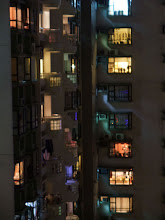Isn't it ironic that buildings are said to be made for people and yet those who actually occupy or use these buildings are seldom able to influence its design.
In the Dutch culture, according to Design Quality in New Housing: Learning from the Netherlands by Matthew Cousins, the Dutch have some sort of governmental policy which improves the quality of the housing and quality of the environment, as it demonstrates aspects of good housing design.
'The Fifth National Policy Document on Spatial Planning, published in 2001, defined design quality through seven criteria: (1) spatial diversity; (2) economic and social functionalities; (3) cultural diversity; (4) social equality; (5) sustainability; (6) attractiveness; and (7) human scale.'
This intro then goes on to explaining each criterion. What strikes me is the implementation of a healthy lifestyle, regardless to location. No wonder a lot of people are in love with the Netherlands.
The requirement of investing in infrastructures (no. 2)serves and supports the criterion no. 3. which is the spaces for diverse activities amongst the community. Which explains no. 4. etc. These rules are quite simple to follow and logical as they are based upon basic human needs.
So what lead the the failure of various vertical cities and other social housing projects in the past? Namely LC's Unite d'Habitation and Pruitt Lgoe. I'm sure there are others out there, but i don't know...
So I guess the Dutch are pretty happy people, living in their pretty high standards of living... well, according to Building Happiness: Architecture to make you smile, Edited by Jane Wernick, a key ingredient, is one's relationship to mother nature and our five senses. Pretty Simple!
However our ambitious lifestyle, constantly running errands, working and just being stressful is affecting our 'normal way of life'. especially by being constantly indoors- the lack of proper ventilation reduces our body's intake of oxygen; noise pollution (need i say more); the lack of being in the sun therefore not producing enough serotonin, which is known to lift depression and aid happiness; and finally the varing change in room temperatures (esp. the difference between indoors and outdoors).
Wow, we're in trouble and are all depressed.
So how do we as architects, (or me cause its my project) begin to envision spaces that do not limit the individual/ user from designing his or her own space or restrict the movement of the user within the building by assigning specific circulation routes and specific locations for interaction?

No comments:
Post a Comment